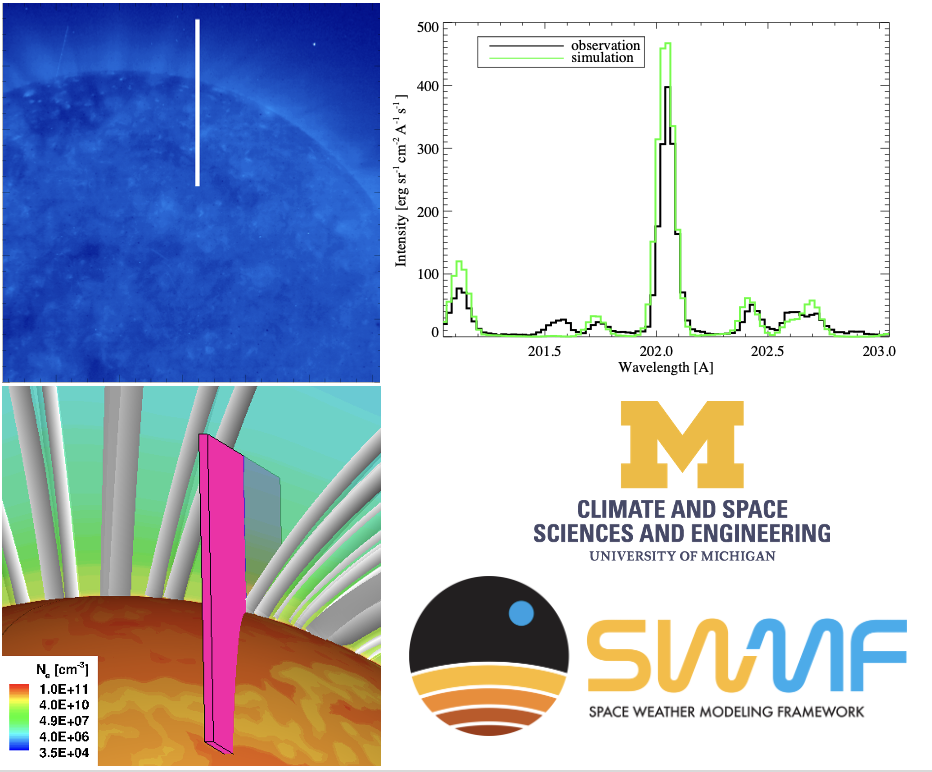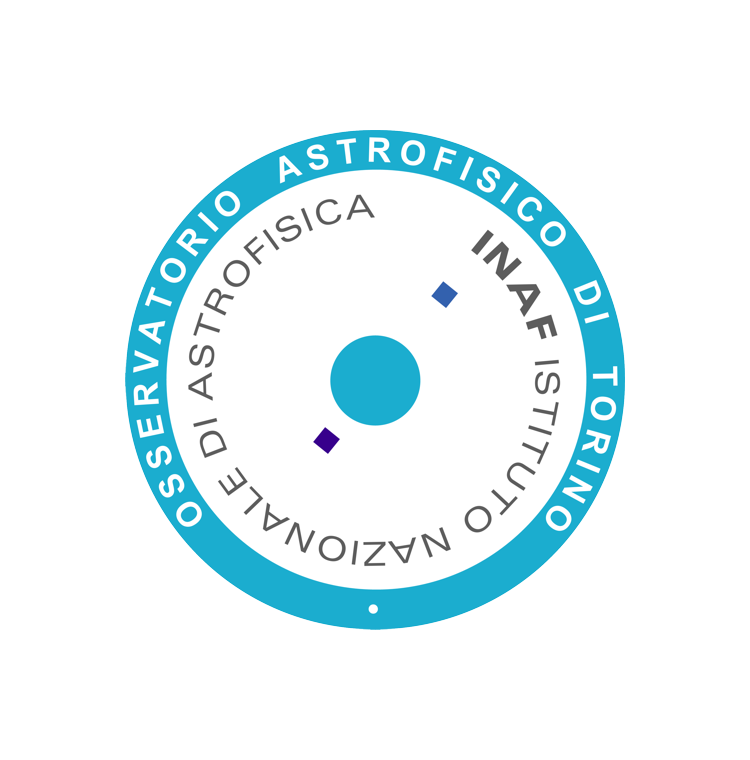
240502.SyntheticSola SpectraWithTheAlfvenWaveSolaAtmosphereModel
Image: Space weather mdelling framewrk
Judit Szente
Giovedì 2 Maggio 2024, ore 11.00 – Sala Seminari Villa Magliola INAF-OATo
SEGUI IL SEMINARIO IN STREAMING
Abstract
AWSoM is the Solar Corona and Inner Heliosphere model of the Space Weather Modeling Framework (SWMF/AWSoM) developed at the
University of Michigan. The coronal model uses magnetogram as boundary condition and is completely physically-based: the solar wind is energized via low-frequency Alfven-wave dissipation. We solve for 3 different temperatures: electron-and anisotropic proton temperatures. The model is routinely validated against in-situ and remote-sensing observations.
In 2018 we implemented synthetic spectral calculations, which can be used to calculate narrowband images, spectral intensity images and spectral line profiles of optically thin plasma for wavelengths of the actual CHIANTI database.
We can dissect spectral emission spatially in the 3D domain identifying source regions, and also separate components of line formation: Doppler-shift, instrumental broadening, broadening due to alfvenic fluctuations, separate observed and theoretical lines, thermal broadening in a 1-2-3 temperature plasma.
In 2021 we added non-equilibrium ionization (NEI) of minor heavy ion charge states’ calculations to the model: within the 3D domain we calculate the NEI parallel to the plasma solution. In 2022 we channeled this solution to calculate the emission of NEI plasma. Then in 2023 we added photoexcitation in order to assist with simulations for the 2024 April 8 total solar eclipse in the US.
With Sarah Gibson, we also added AWSoM as an available model for SolarSoft’s FORWARD module and populateda database with solutions of solar cycles 23-25, which enables using our simulation results for polarimetric synthetic observations.
Recently we have developed the Multi-Ion AWSoM code, which uses multi-temperature plasma of electrons, protons and minor heavy ions: we calculate heavy-ion temperatures due to stochastic heating, and channel the results into the line profiles within the spectral calculations.
Our goal is to implement a fully-multi-fluid 3D MHD with differential streaming and temperature-anisotropy for both protons and heavy ions, which brought us to look at UVCS data.

